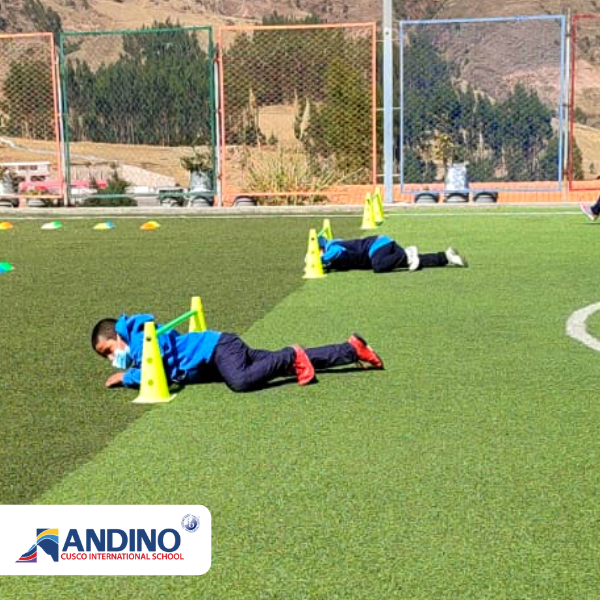PONEMOS A PRUEBA NUESTRAS HABILIDADES MOTRICES / PUTTING OUR MOTOR SKILLS TO THE TEST
En Primer y Segundo Grado trabajamos las habilidades motrices a través de “Circuitos de acción motriz”. Una de las experiencias de aprendizaje más motivadoras son los circuitos motrices en los estudiantes de este nivel, ya que permite motivar la relación entre el cuerpo y el entorno, como: aumentar la agilidad, trabajar el control postural, desarrollar el concepto de esquema corporal, etc.
Con estos circuitos de acción motriz se contribuyen al desarrollo de una o más habilidades, a partir de uno o más patrones de movimiento. Al mismo tiempo, es una forma de comprobar y evaluar las habilidades motrices básicas como caminar, correr, saltar, reptar, etc.
Así mismo, cabe resaltar que cada una de las experiencias de aprendizaje en Educación Física va de la mano con nuestros atributos del perfil educativo; así vemos a nuestros estudiantes ser buenos comunicadores (al escuchar las consignas, reglas de la actividad y dar a conocer variantes), ser audaces (al atreverse a desarrollar el circuito y aprender de los resultados), ser de mentalidad abierta (al aceptar y trabajar con todos), y ser solidarios (al fortalecer el vínculo entre ellos en trabajos de equipo e individuales).
—
In First and Second Grade we work on motor skills through “Motor Action Circuits”. One of the most motivating learning experiences are the motor skills circuits in students at this level, since it allows them to motivate the relationship between the body and the environment, such as: increasing agility, working on postural control, developing the concept of body schema, etc.
With these motor action circuits, they contribute to the development of one or more skills, based on one or more movement patterns. At the same time, it is a way to check and assess basic motor skills such as walking, running, jumping, crawling, etc.
Likewise, it should be noted that each of the learning experiences in Physical Education goes hand in hand with our attributes of the educational profile. Thus, we see our students being good communicators (by listening to the instructions, rules of the activity and making variations known), being risk-takers (by daring to complete the circuit and learning from the results), being open-minded (by accepting and working with everyone), and be caring (by strengthening the bond between them in team and individual work).



